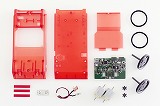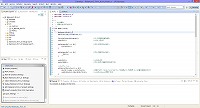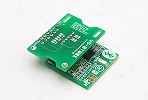http://singularityhub.com/2014/12/29/technology-is-rapidly-dissolving-national-borders/
Global Citizenship: Technology Is Rapidly Dissolving National Borders
Besides your passport, what really defines your nationality these days?
Is it where you were live? Where you work? The language you speak? The currency you use?
If it is, then we may see the idea of “nationality”
quickly dissolve in the decades ahead. Language, currency and residency
are rapidly being disrupted and dematerialized by technology.
Where you live, where you work…
Increasingly, technological developments will allow us to live and work almost anywhere on the planet… (and even beyond).
Soon, you’ll be able to live in the Greek Islands and work in Manhattan, London, and Los Angeles.
Telepresence & Virtual Environments
Today I use telepresence robots to telecommute around
the globe, attend an XPRIZE meeting in India, or if I’m overseas, pop
home for breakfast or dinner with my kids.
The product I personally use comes from Suitable
Technology and is called the “Beam.” I have about 15 beams across my
different companies, and I’ll be integrating another 20 beams into my
Abundance 360 Summit.
Beyond these telepresence technologies, the biggest
impact on dematerializing nationality will come from development of
fully immersive, high fidelity, virtual worlds. Virtual workplaces you
plug into using VR gear to interact with other virtual workers (perhaps
even A.I.’s) on a daily basis.
The earliest example of a virtual world where people were “living” and “working” is Phillip Rosedale’s Second Life.
You can think of it as a proof of concept, an early prototype of what is coming.
Think of it as pong, compared to today’s video games.
Even as rudimentary as Second Life is
today, its annual revenues have reached US$567 million, and since its
inception, it has transacted over US$3.5 Billion as people build and
sell virtual products in this virtual world. Not bad…
But what is coming next will be transformational.
With the creation of new VR technologies (Oculus
Rift technology, Samsung Gear) and 360-degree camera technology
(Immersive Media, Jaunt), we’ll be able to slide on a pair of Goggles
and “go” anywhere in the real and virtual world.
Companies will forgo bricks and mortar, and instead
allow its work-force, from around the world, to beam into the same
environment and work cooperatively. Think about a ‘kinder-gentler ‘
version of The Matrix.
What language you speak…
We are headed toward a world where everyone will have the tools to speak every language, in real time.
Right now, Google Translate does a damn good job.
The system built by Franz Och at Google over the last decade can now
support translation between 80 language pairs. (Note: Franz is now
heading machine learning at Human Longevity Inc, where he is helping to
translate between the languages of genetics, phenotype and metabolome.)
In 2013, Google stated that Translate served 200 million people daily.
Another more recent example of simultaneous
translation, this time between spoken word, is Skype’s recently
announced “Live Translate.”
Skype’s embedded artificial intelligence promises to
translate your voice into another language in close to real-time while
you are video-Skyping someone else on the other side of the planet
(right now, it only serves English/Spanish translations).
The bottom line: Star Trek universal translator is here and it’s going to be a game-changer.
What currency you use…
Decentralized, unregulated cryptocurrencies (like
bitcoin) will make it MUCH easier to trade and transact both across and
within borders.
While this year hasn’t been so great for bitcoin,
the fact is, cryptocurrencies are here to stay and will find more and
more useful applications.
Take the recent Russian ruble crisis for example.
In Q4 2014, the ruble had a rapid devaluation due to
political instability and the crashing price of oil, ending up at a
14-year low.
So what happened?
Russians have started pouring money into bitcoin.
In mid-December 2014, CNBC reported, “Transaction
volumes between the ruble and digital currency bitcoin enjoyed their
biggest day of the year. This was close to a 250 percent increase in
transactions.”
Bitcoin dematerializes the banks, and demonetizes transaction fees. It is global and unregulated. And it is easy to use.
With these characteristics, we will see a shift away
from national currencies toward global cryptocurrencies that provide
some level of stability and independence from your country’s political
turmoil, or whether your country’s GDP is based on oil exports.
Consequences for the Entrepreneur/CEO
We live in the most exciting time ever. In my mind, a
borderless world will be a more creative, lucrative, healthy, and
frankly, exciting one.
Especially for entrepreneurs.
A world where you, as an entrepreneur can now become a ‘multinational corporation’, accessing 5 billion potential customers.








 The
The